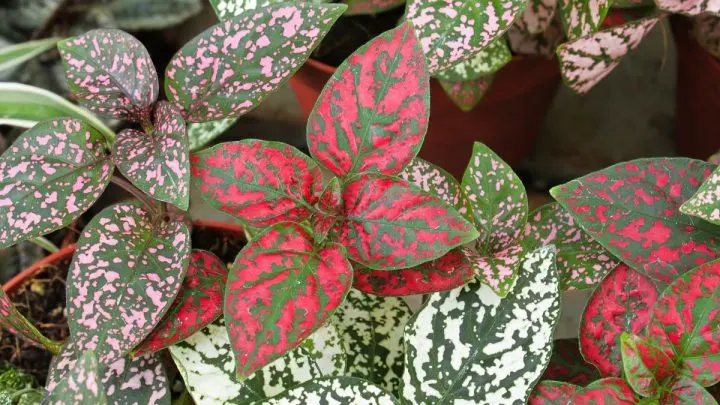Questions on how to propagate the polka dot plant have all the answers in this article. This lovely exotic plant has some specific tricks when it comes to its propagating.
Besides that, this tropical plant is such a beautiful, interesting plant to have in your home. No matter which variety you buy, green or green-pink, with its white polka dots, oh-la-la ladies! It will be real heaven in your home.
Besides the tips on how to propagate the polka dot plant, we’re giving you the best advice on its ultimate care guide: watering, soil types, fertilizer, and much more.
In case you still want to know more, all the way down, at the very end, we have a FAQ section which will, I bet, answer all of your questions about this plant.
Polka Dot Plants Features
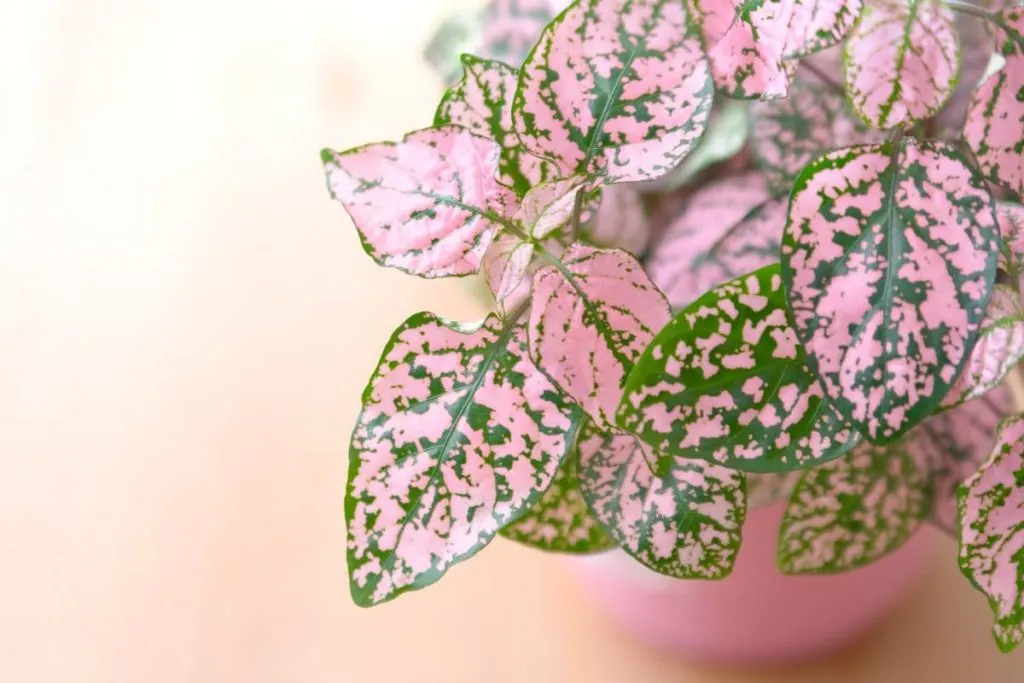
The plant’s exotic pink, purple or green appearance has many moving parts: silver dots painted on olive-colored leaves, crimson-colored undersides, and sprays of open bell-shaped red or white flowers with bright yellow centers on gnarled, bamboo-like stems.
This premium begonia is an excellent choice if you’re looking for something unusual and eye-catching. These evergreen perennials are native to the tropical forests of Brazil, so it’s no surprise that they need warmth, strong filtered light, and consistent moisture.
They are fairly fast growers that can reach three feet or more, and their cascading white flowers bloom during the warm season.
Like the cane begonia, the plant’s thick stems retain little water and do not like wet conditions. They appreciate their topsoil drying out between waterings.
Light is also important, but the secret of Hypoestes Phyllostachys care is the humidity factor. The sultry environment mimics its native habitat.
You don’t need to build a greenhouse for this, but you will need to make some humidity additions to keep your polka dot fresh and happy – nobody wants a sad clown begonia!
Polka Dot Plant Propagation
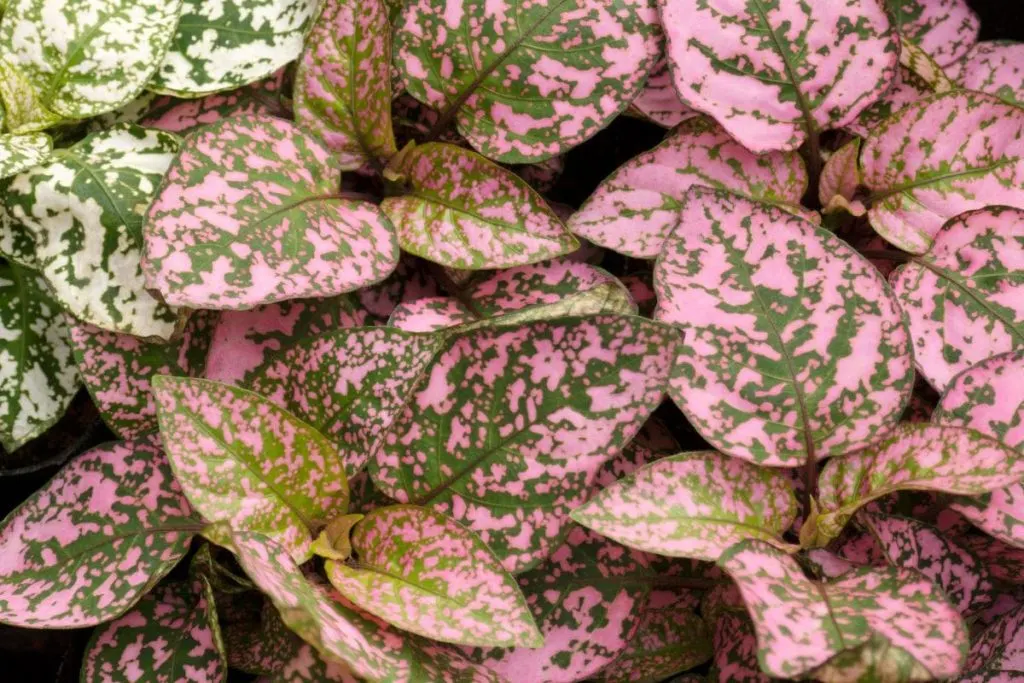
Unlike other plants from the same family, the polka dot plant still has some specifics regarding its reproduction.
Before you get it or start breeding this plant, you should carefully read the tips and guidelines for growing it.
Then let’s find out more.
Propagating Polka Dot Plants During Winter
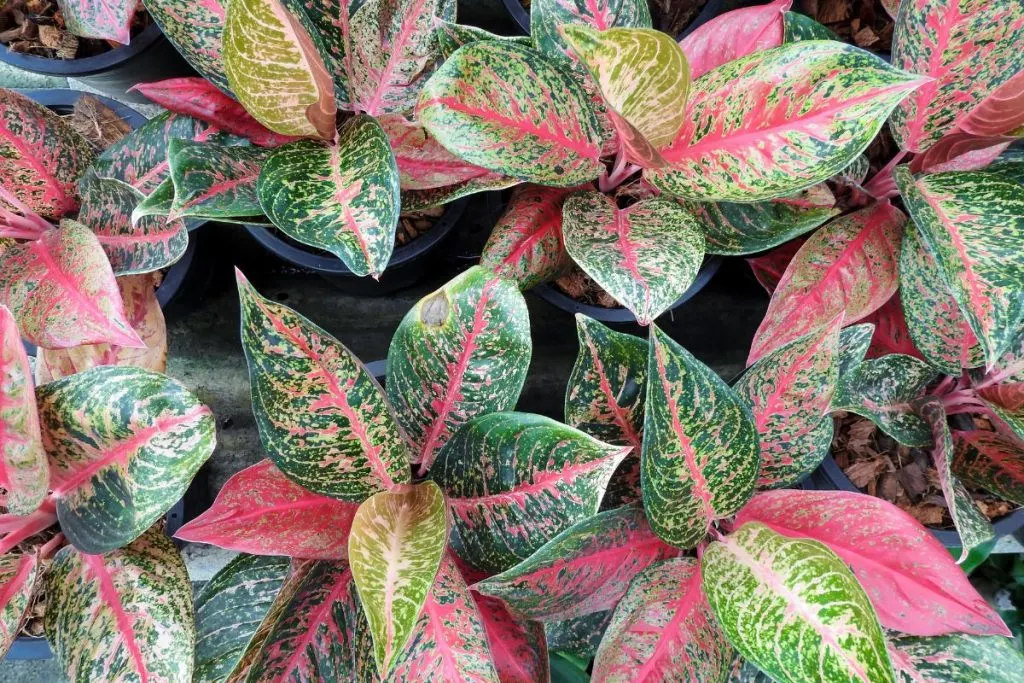
Since this plant is a tropical plant, it does not tolerate frost. Before the first frosts, you can cut the stem of the plant to take root in a small pot or bucket of water.
If you are storing them outdoors in clear plastic containers, bring these plants to a covered area that receives partial sunlight. It can be planted in the garden in spring after frost.
Propagate The Polka Dot Plant With Water
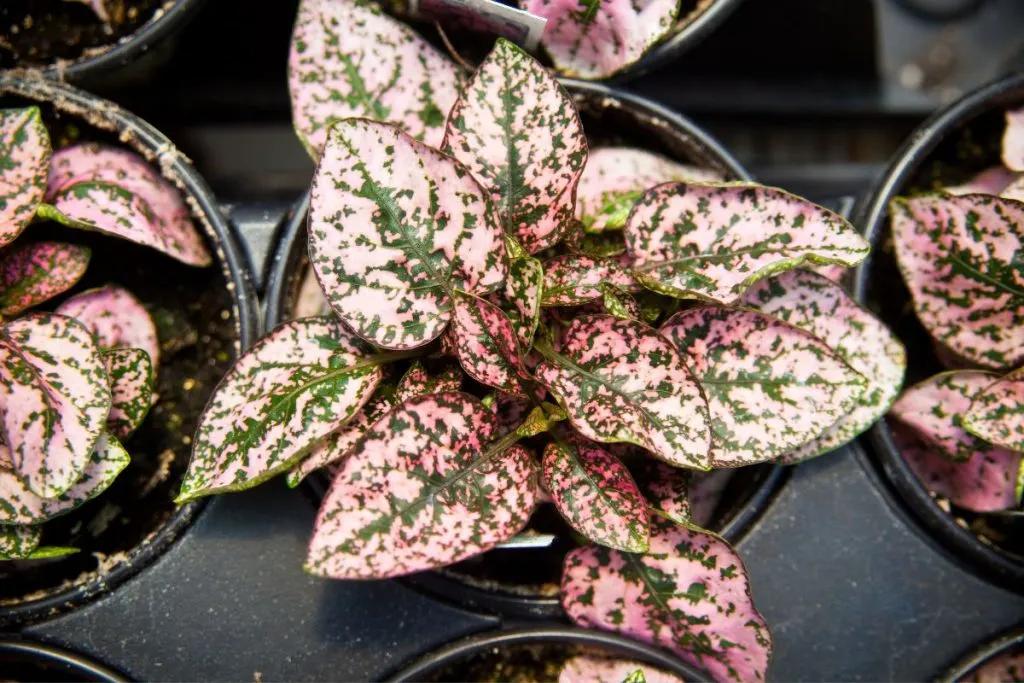
The only thing easier than pruning maculata is propagation. There are two basic methods: placing in water or directly in the ground.
Propagation by water – Simply place the end of the cutting in a jar of water. Small containers are best: the stem releases rooting hormones that you don’t want to dilute.
On this topic have you ever wondered how long can flowers go without water?
Propagate The Polka Dot Plant With The Soil
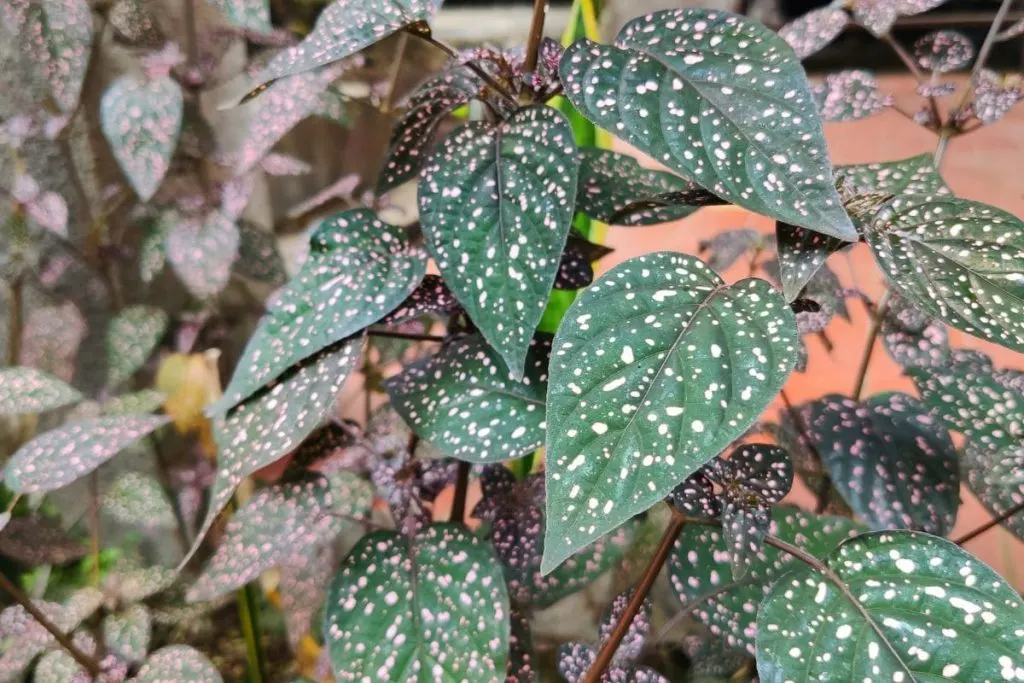
A one-step method is to dip the end of a cutting in powdered rooting hormone and bury it in the soil.
A chopstick or pencil is great for poking a hole in the ground for the stem. Firm the soil around the cutting and water the well.
Regardless of the method, once the cuttings are in the ground, you can help them grow by placing the container in a plastic box or bag. Open it every few days and mist it.
Give the cutting good lighting, keep the temperature comfortable and in a few weeks your new plant will be established!
How Can You Grow Polka Dot Plant From Stem Cuttings?
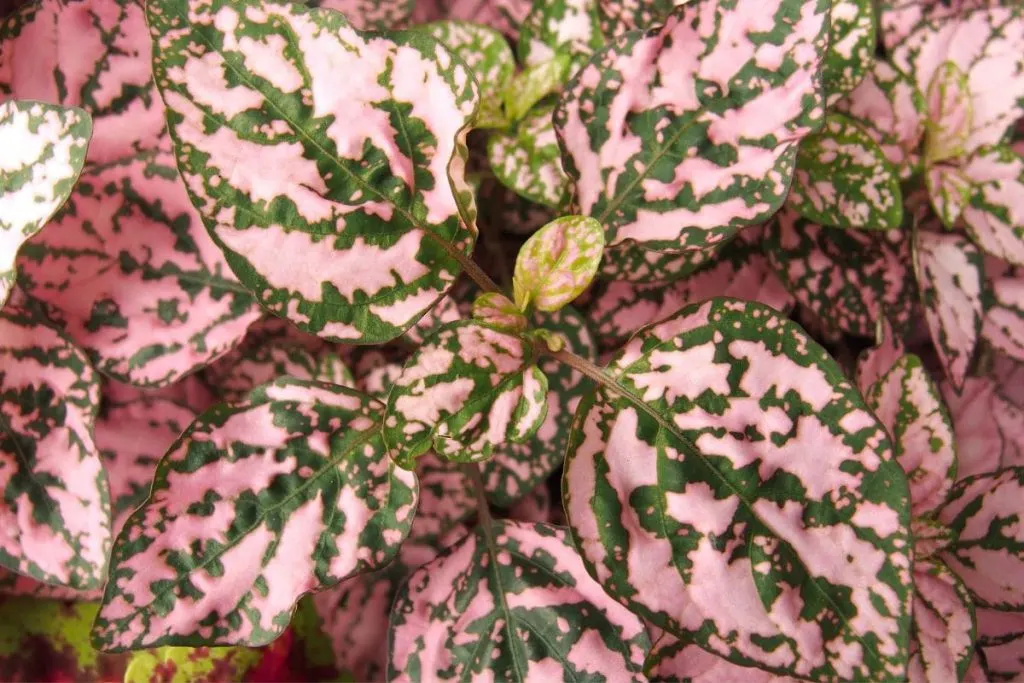
A well-filled maculata is a spectacular plant, but the bushy appearance requires some intervention. Canes become sparse and leggy, as the plant tends to invest more energy in growing instead of growing. Pruning corrects this tendency.
The mildest form of pruning is tip pinching. Cane tips release a hormone that suppresses branching, so removing them encourages more lush growth.
Cut 1 inch above the leaf. A new leaf will soon sprout just below the cut. You can make a more serious rearrangement of the plant using the same method above any leaf.
Use sharp, sterilized scissors. Dipping in isopropyl alcohol works well.
Propagate Your Polka Dot From Seeds
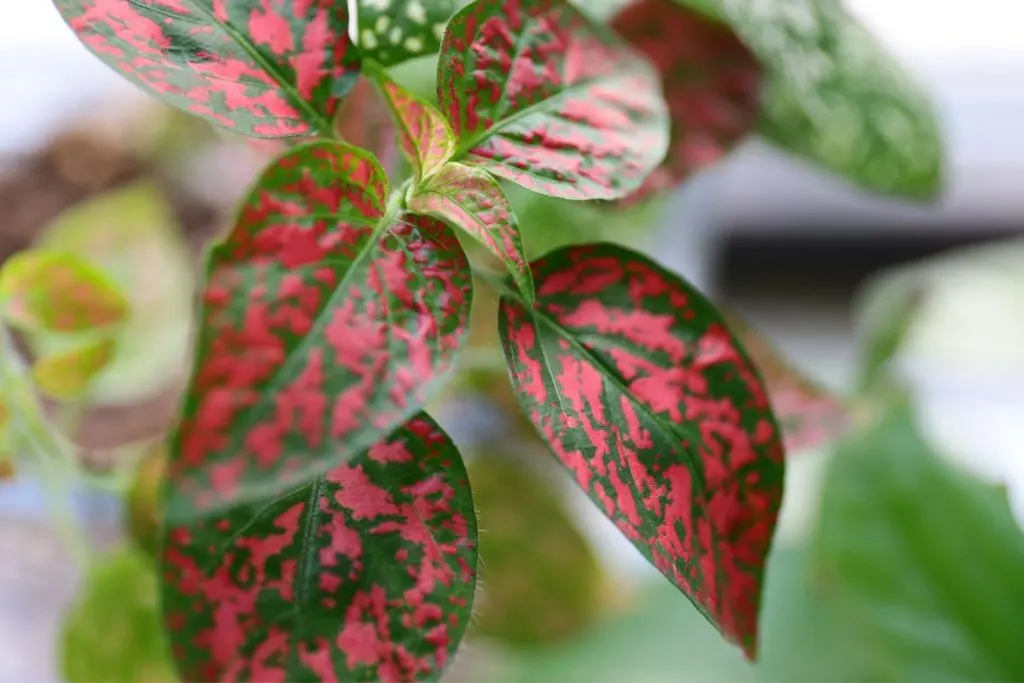
Sow the seeds on a warm, moist soil surface. Place the plant in a sunny location. The seeds should germinate within a few days.
When the seedlings grow a few inches, usually within a few weeks, they are ready to be transplanted into larger containers or planted outdoors. Do not plant outdoors until the risk of frost has passed.
Dot Plant Hypoestes Phyllostachya Care
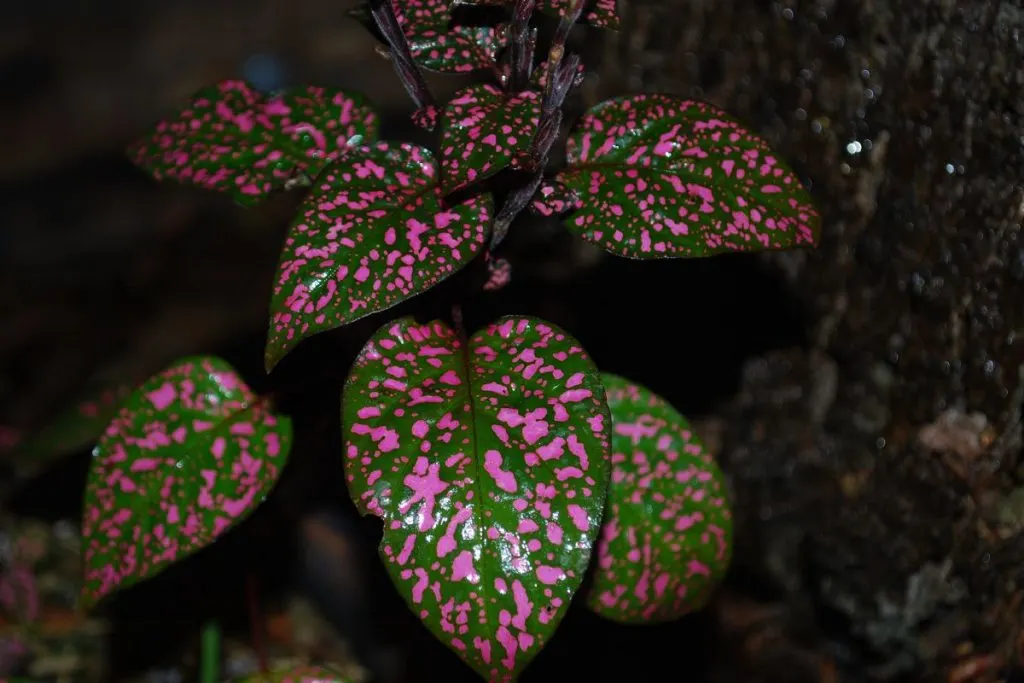
Warm temperature and humidity are the keys to growing polka dot plants. If there is not enough rainfall, and you’re growing this plant inside do a regular tap watering.
This plant also needs regular feeding throughout the growing season, from spring to fall. Polka dot plants usually bloom a little bit in summer, with small lilac or pink flowers on the tips. Pinch these tiny flowers to energize the plant to grow vibrant leaves.
Humidity Needs Of Polka Dot Plant
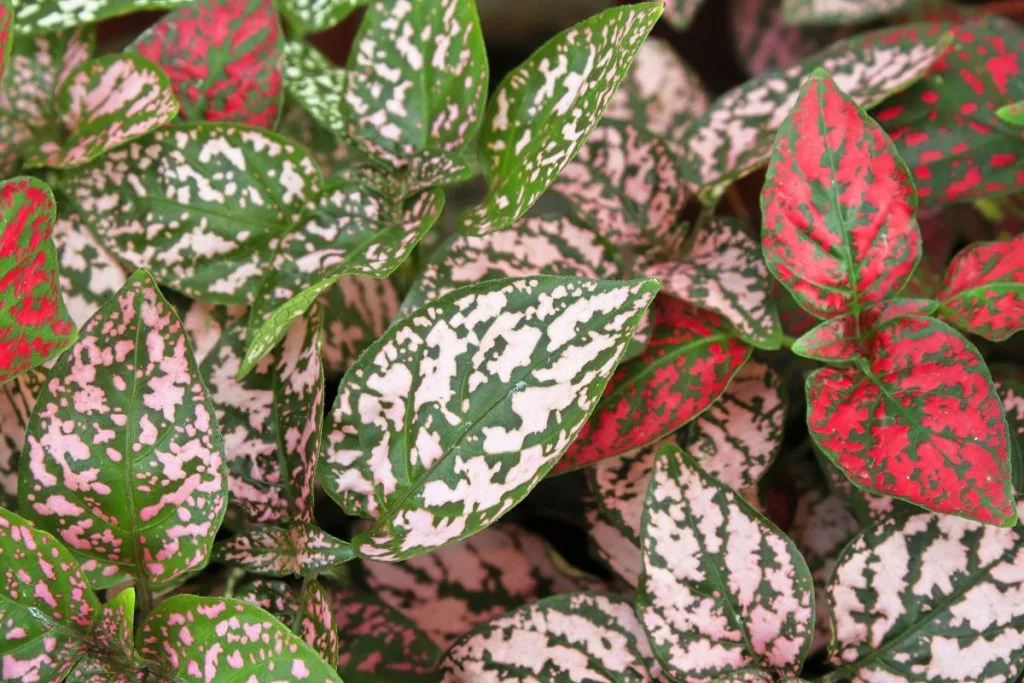
We’ll talk about moisture first because it’s the one element that can mean success or mysteriously mediocre results with this plant. It may not fail in low humidity, but it will not truly bloom.
Unexplained leaf loss and failure to flower can often be corrected by increasing ambient humidity. Those who have the most success maintain a high humidity of their maculata, even if they do not emphasize it.
Clustering with other plants and using containers of water are basic methods to raise the humidity, but if your home is very dry—and most tend to be—a humidifier is an ultimate solution.
It’s more work, but it will improve the health of all your tropical areas, and the humidity has positive benefits for people too.
Try at least 45% humidity; more is better. Taking care of humidity is especially important in winter when indoor heating dries the air.
Temperature Needs In Growing Season Of Polka Dot Plant
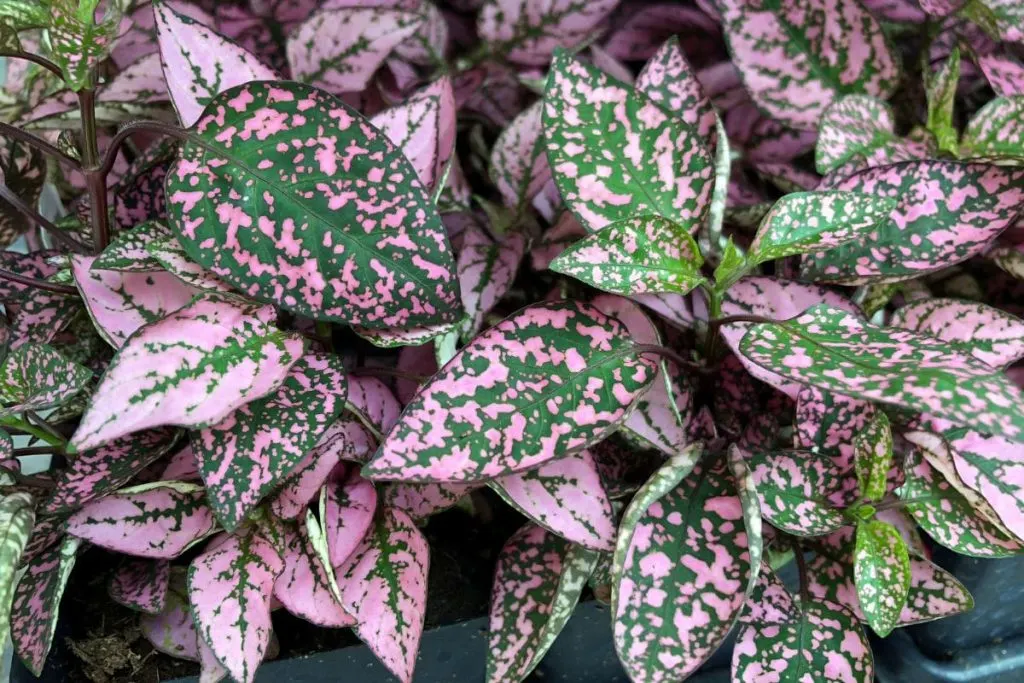
This is easy if you keep them indoors, as they like the same temperatures as us. Keep them away from drafts and avoid temperatures of 50 F or lower.
They grow best at temperatures between 160 and 65 F but tolerate warmer temperatures in spring and summer during the day.
Water Needs For Polka Dot Plant
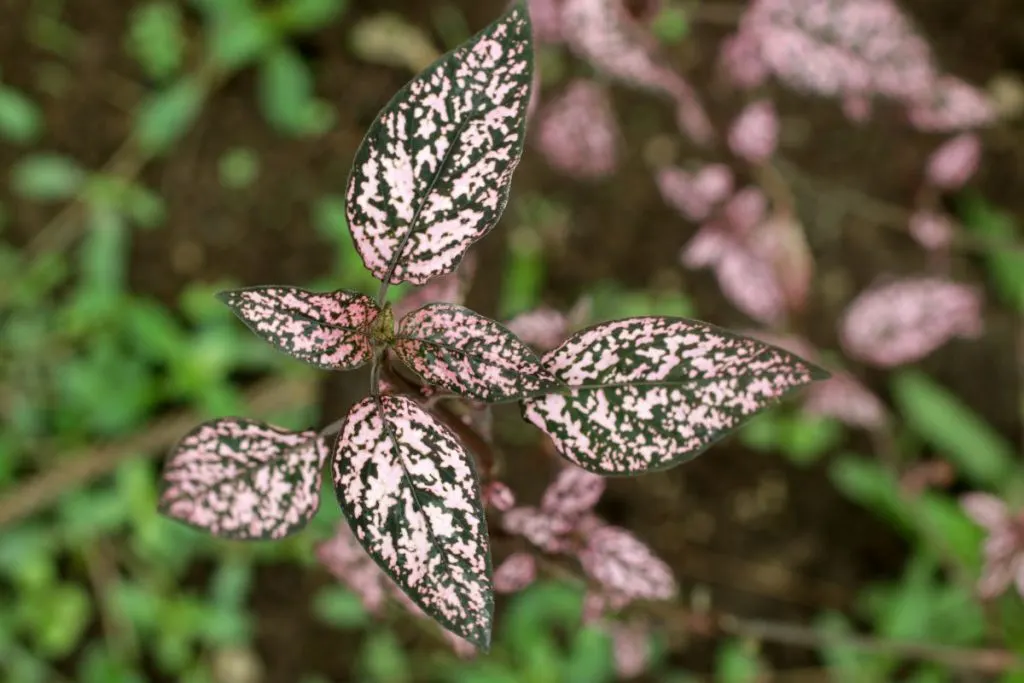
Watering this begonia can be tricky unless you have the right type of soil, which we’ll explain briefly, but first, let’s go over the rules.
Maculates like moist soil most of the time – never let them dry out – but they benefit from the top of soil drying out before watering again. These plants develop root rot easily if they are too wet, so never water when the soil is wet.
Allowing topsoil to dry out also discourages fungus and nasty pests like mosquitoes. They don’t like their leaves getting wet, so watering from below is often recommended – but if that seems like a hassle, their leaves are big enough to avoid them if you’re careful.
The point is to pay attention to their soil and water thoroughly after the top is sufficiently dry. They like a little break between waterings, but actual stress is not good: they should never wilt.
Light Conditions For Polka Dot Begonia
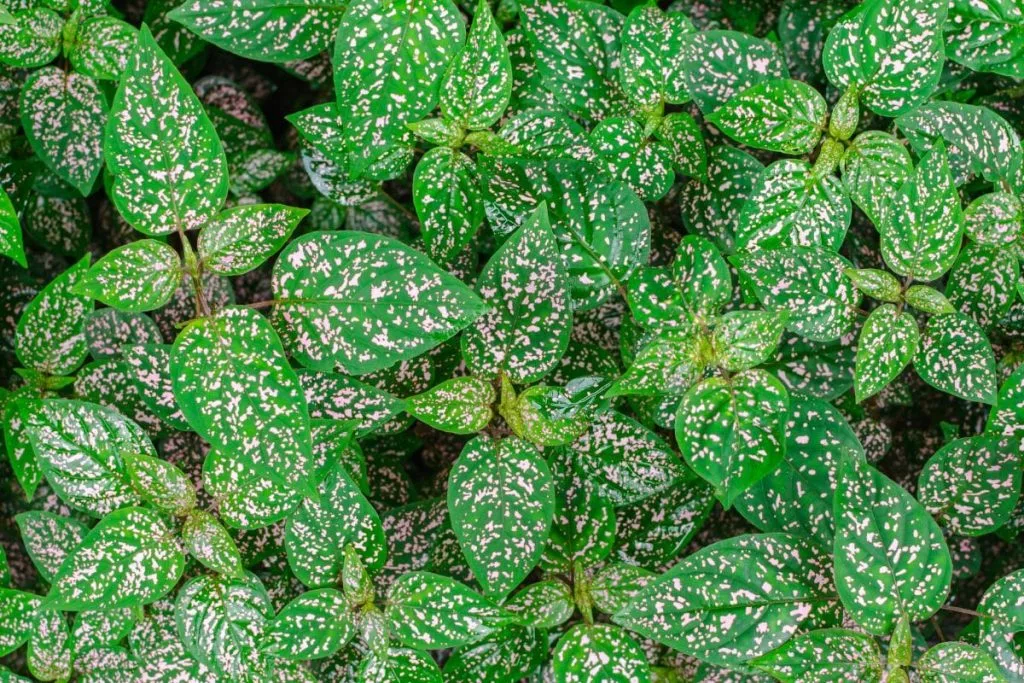
Give your polka dot a bright spot out of strong sunlight: direct rays can fade silvery spots or even burn leaves. Southern exposure works well in the winter months; east or west windows are fine year-round as long as you keep them out of direct light. Bright indirect light is the goal.
If necessary, the plant will tolerate indirect sunlight, but it will not be happy in very dark rooms. Southern gardeners should consider spotted begonia a shade plant, but those in cooler climates can place it in bright windows with limited direct morning or afternoon sun.
Potting Soil For Polka Dot Plant Hypoestes
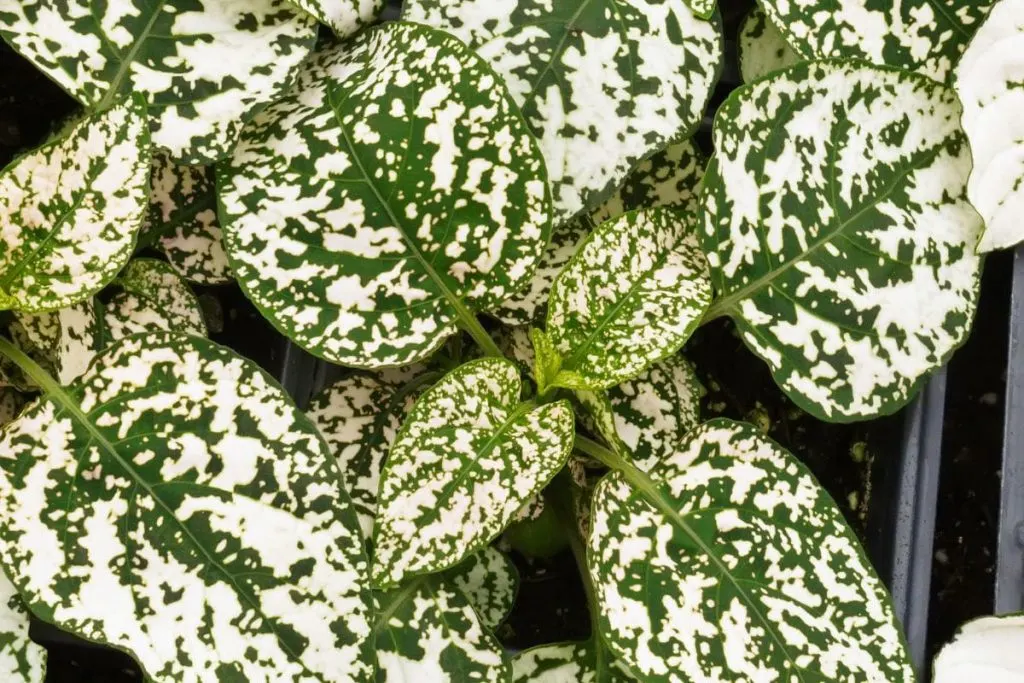
Like many plants, spotted begonia likes well-drained soil that retains moisture without becoming soggy. They do well in light commercial mixes; but, to give the perfect conditions, it is a good idea to mix in these changes:
- Perlite – These tiny white balls of soft material with an almost Styrofoam texture are natural volcanic glass. They do an excellent job of keeping the soil well aerated and light, while also helping to insulate the soil from rapid temperature changes. Do not confuse perlite with vermiculite, which holds too much moisture.
- Wood chips – Sprinkling non-toxic wood chips help aeration: angled chips create welcome space in the soil. Chips fall apart, but this is not a concern because maculates are often transplanted and refreshed.
Start with light commercial soil and add a few handfuls of perlite along with a small number of wood chips until you have a springy, fluffy mix. Consider mixing enough to keep it for future seasons(potting mix). Store it in an airtight container to keep it fresh and sterile.
Fertilizers For Polka Dot Plant

Even in bright light, these plants feed moderately, so they are easy to fertilize. The main thing is not to overdo it: you don’t want brown tips and edges on those fancy leaves.
No special mix is needed, just a balanced fertilizer with equal NPK numbers.
Dilute it by 50% and feed them every two to four weeks when they are growing, and reduce it during the winter. It’s easy to use and I get great results year after year.
Polka Dot Plant Care-Repotting Advice
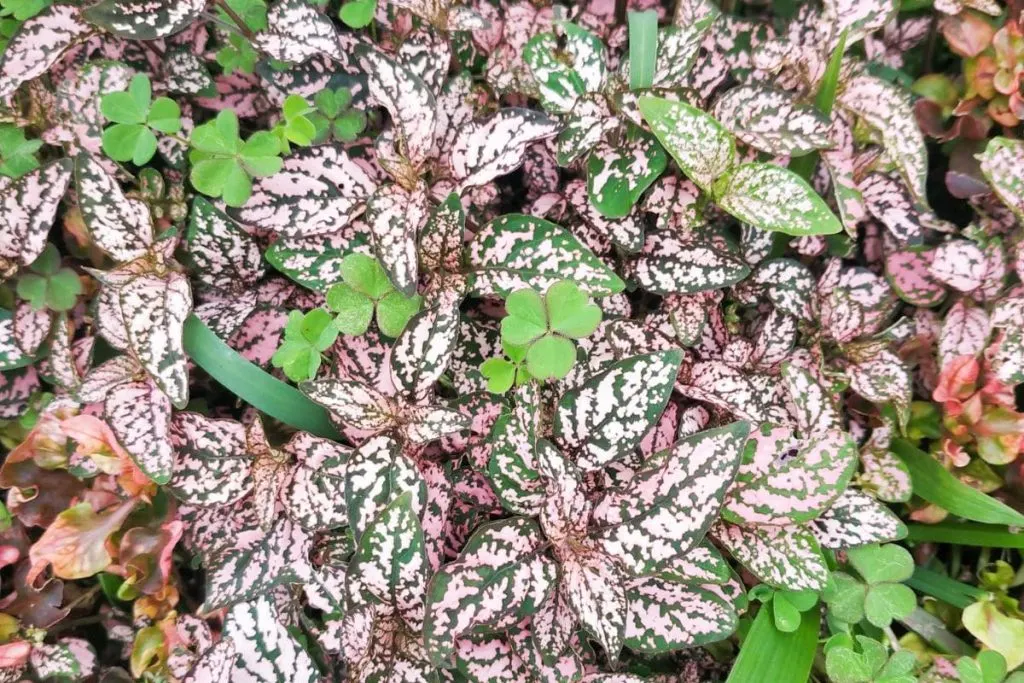
Annual transplanting is recommended. Maculata like to be slightly root-bound in small pots, but their soil becomes depleted from densely packed roots. Even if you don’t pot them, an annual soil refresher works well for them.
Since they tend to stretch, choose a heavy container such as terracotta or stone. Alternatively, place their light container in a heavier container.
If transplanting into a container of the same size, gently loosen and remove the dirt around the edges of the roots to make room for fresh soil.
Don’t oversize the pot: you don’t want them to expend excess energy on their root system. This is not their prominent characteristic.
Pests And Diseases
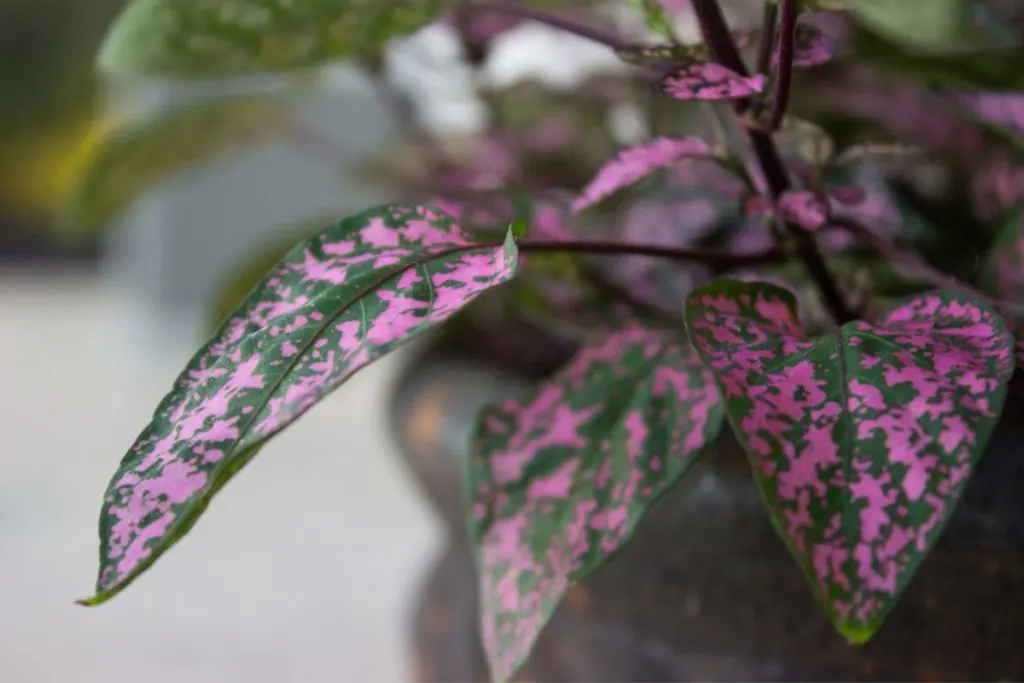
If you keep your Maculata healthy and respect basic plant hygiene – keep the leaves clean, and sterilize your tools – it will not be susceptible to pests or diseases.
Powdery mildew
This fungal disease is one of their most common ailments. Unfortunately, otherwise healthy wet conditions increase this threat. It starts with circular patches of white powdery coating on the leaves.
Botrytis
Another fungal disease, botrytis, causes wet, brown spots. It often starts on the lower leaves that touch the ground. Poor air circulation can contribute. Remove fallen leaves or flowers and prune affected areas. Sterilize with methyl alcohol and apply fungicide if it returns.
Bacterial leaf spot
This disease causes pimply spots on the leaves. You can limit the damage by pruning the affected areas – heavily infected plants should be safely discarded.
Stem rot
Prevention through well-drained soil and careful watering is the only treatment. Stems affected by the disease become mushy, swollen, and black.
Pythian root rot
Another trouble, this disease turns the roots yellow and the flower stems black. Judicious watering helps prevent it, as does sterilized soil. Contaminated plants should be disposed of safely – not composted. The disease is highly contagious.
FAQ How To Propagate Polka Dot Plant
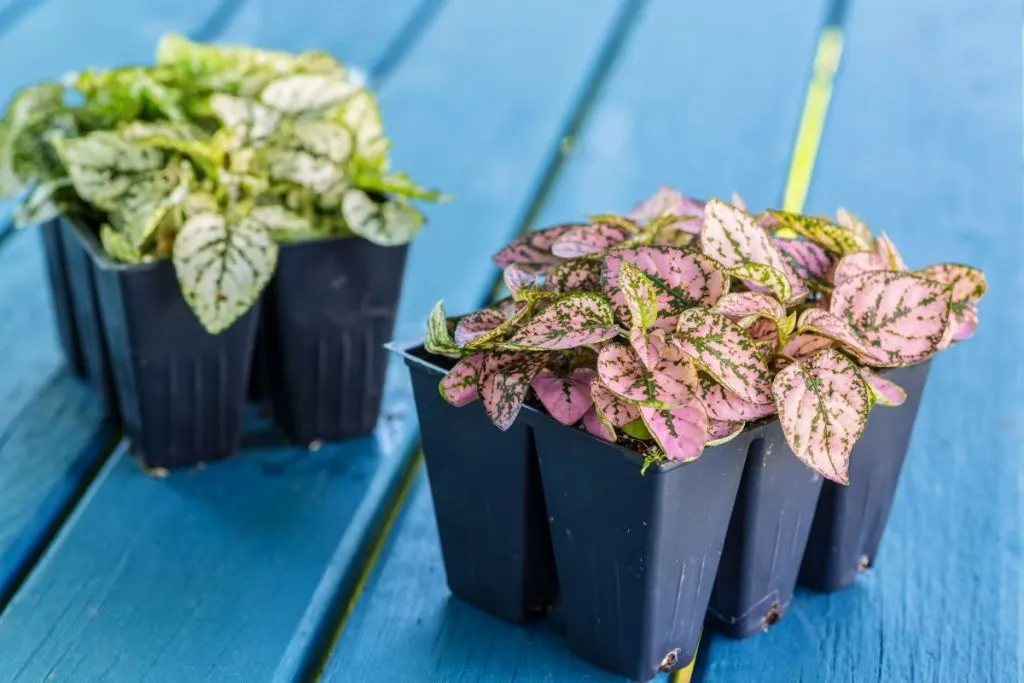
As we promised at the beginning, we’re sure that you still have some answered questions about this plant, so we’re hoping we’re going to answer all of them in this article.
Below you’ll find, the most commonly asked questions about this plant and I’m sure they will be useful in your further care and growing process of the polka dot plant.
How Fast Do Polka Dot Plants Grow?
This plant has a normal growth rate, but is concerned about growing conditions and slows it down if it is immature.
Are Polka Dot Plants Easy To Grow?
Polka dot plants are very easy to maintain. It can be difficult getting its growing conditions perfect and right, but once established, both you and your plant will be very thankful for it.
How Long Can Polka Dot Plants Live?
Dotted plants usually complete their life cycle in one year. However, at the end of the growing season, cuttings can be used to extend the life of the stem.
When Do Polka Dot Plants Bloom?
Maculate blooms from spring to fall, producing clusters of white flowers with cheerful yellow centers on a single stem. They are more of a nice accent than a feature.
You usually don’t need to help them bloom: normal fertilization and good lighting should do the trick.
If you see fewer blooms than you would like, try increasing the light. Experiment with gentle direct morning or late afternoon sun. Also, attachment to roots can put them in a flowery mood.
Polka Dot Plant Outdoors
Plants grow better in partial shade than in the full sun, but their leaves will wilt even in very low light.
They like moist environments, so they should be perfectly happy outdoors in the Midwest in the summer but may need a constant mist indoors in the winter.
Is Polka Dot Plant Toxic?
These angel wing begonias are considered toxic to dogs, cats, and horses by the ASPCA. The poisons are primarily in the root, although its stems and leaves can cause oral irritation. Bottom line is that you should keep it away from your paw friends.
Wrapping It Up
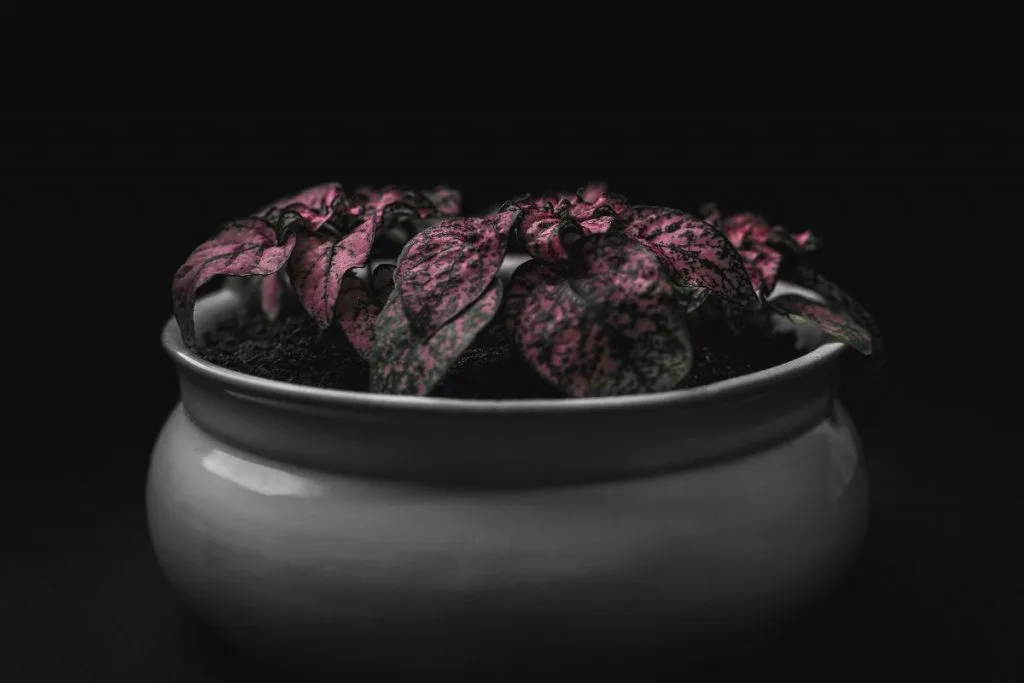
And just like that, we’ve come to an end of another care guide article. I enjoyed making this article for you and I sincerely hope you enjoyed reading it.
So ladies, how to propagate the polka dot plant? I know you know it now and I’m very proud of you. What about other things? Watering, soil type, fertilizer? We know it all now!
This beautiful plant will be very grateful when you give it everything it needs.
When you initially fulfill its requirements and when it blooms in your home, you will see how much it pays to pay attention to this tropical plant.
It’s your choice to buy it or not buy it now, but I bet I know what you’re all thinking. I would want to have it in my home as well I do!
Thank you for reading our article, see you soon!

